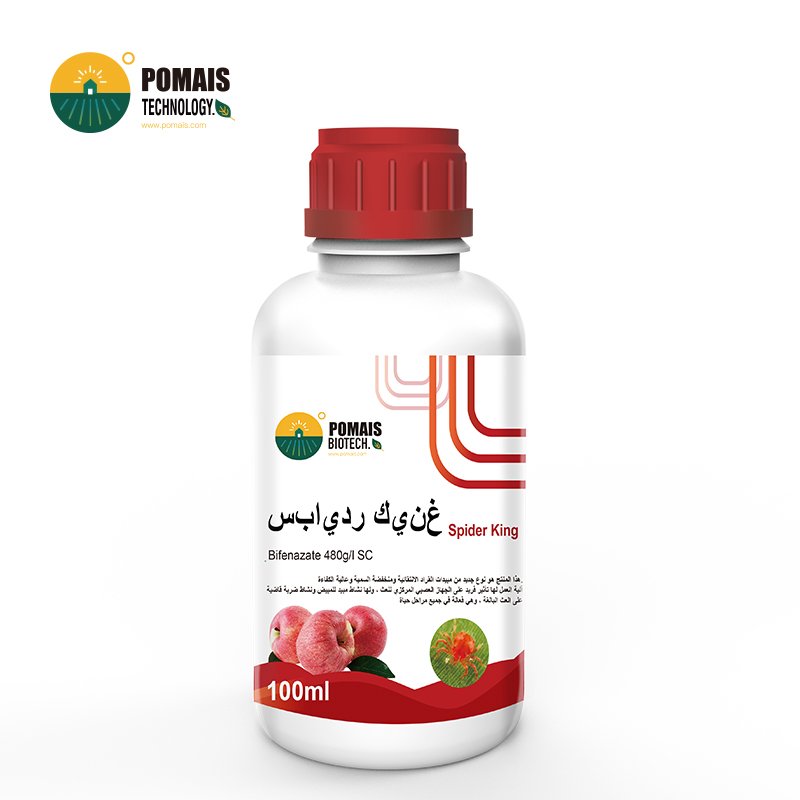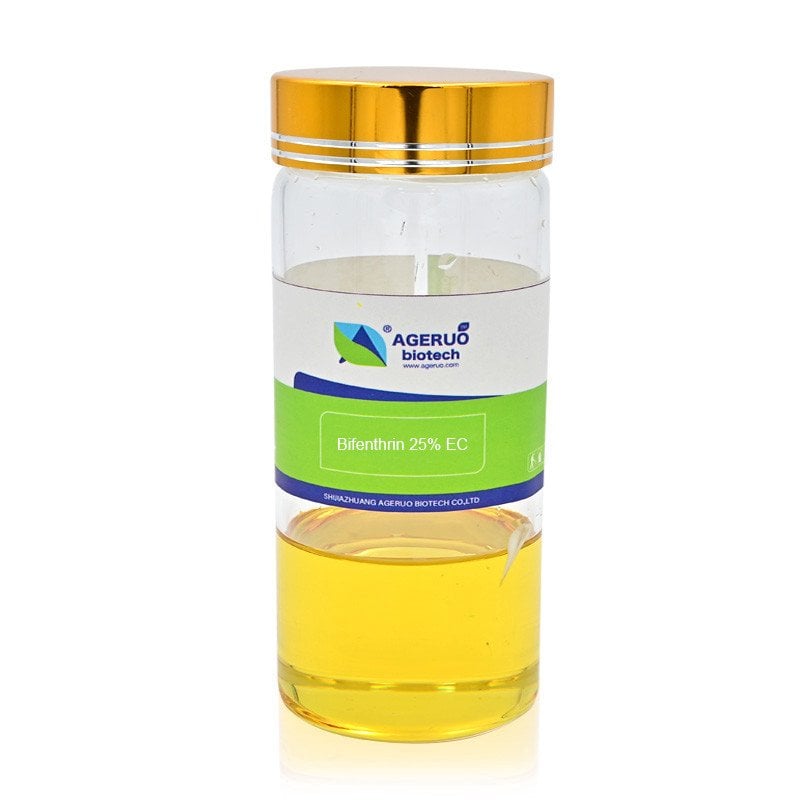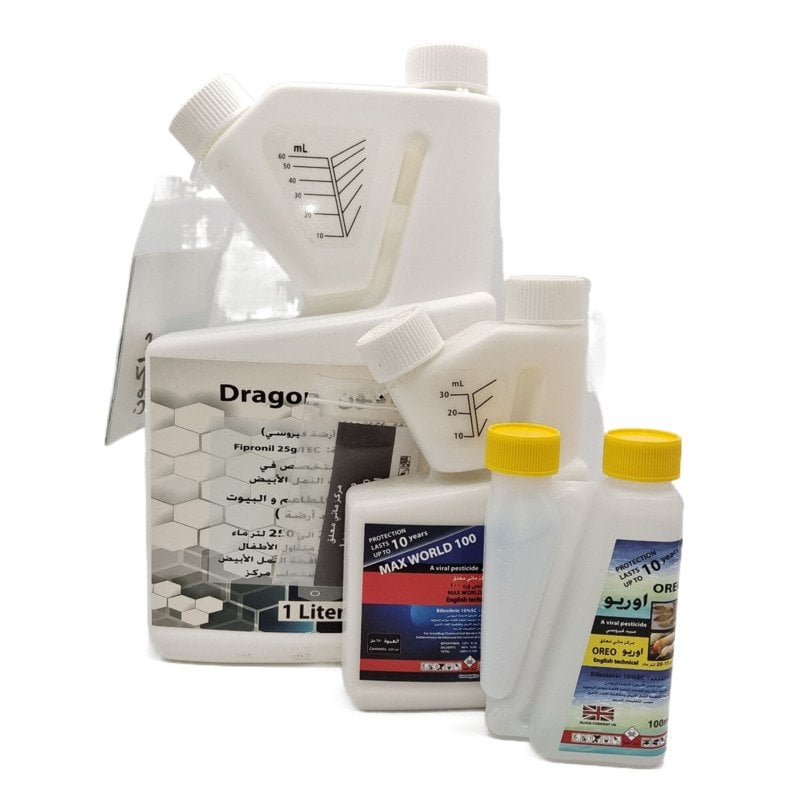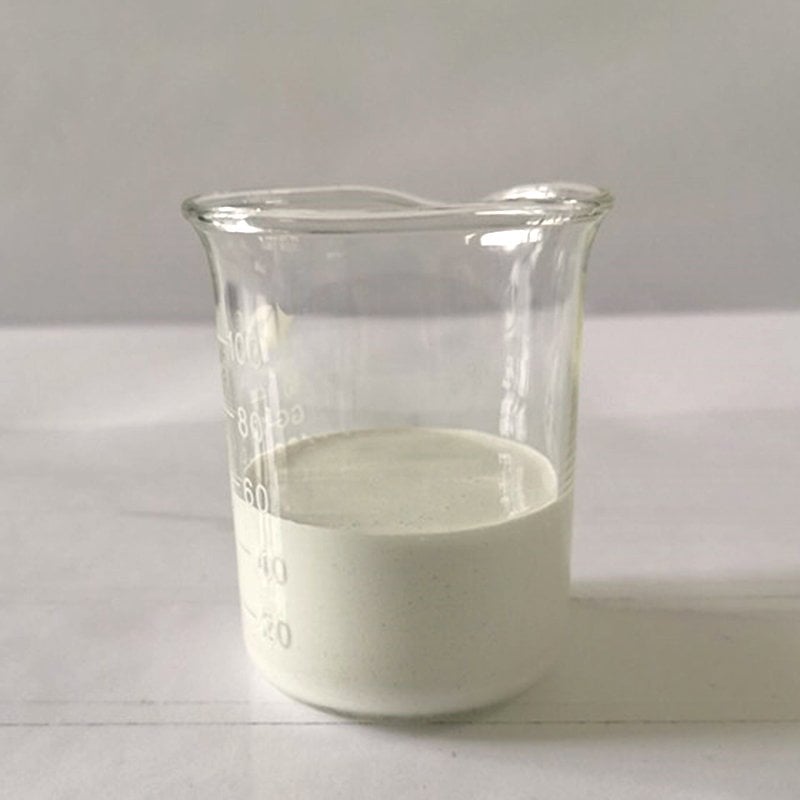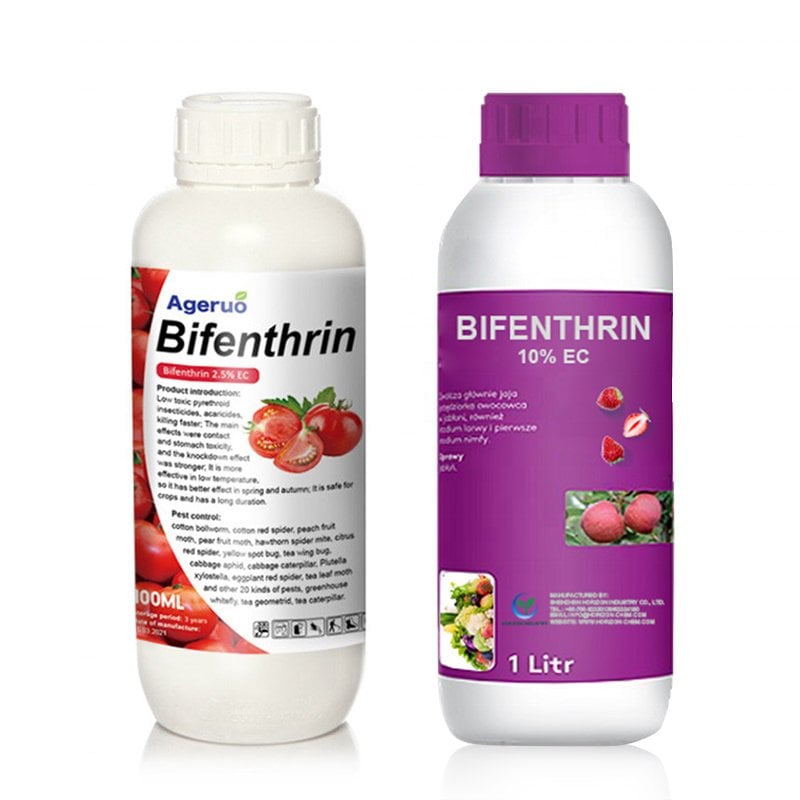Esfenvalerate vs Bifenthrin
When selecting an insecticide for pest control, understanding the differences between esfenvalerate and bifenthrin is essential. Both are synthetic pyrethroids, known for their effectiveness against a variety of agricultural and structural pests. However, their specific characteristics, target pests, and residual activity make them suitable for different situations.In this article, we’ll provide a detailed comparison of esfenvalerate vs bifenthrin, including their modes of action, uses, advantages, and application guidelines.
Differences Between Esfenvalerate and Bifenthrin
| Feature | Esfenvalerate | Bifenthrin |
|---|---|---|
| Chemical Class | Pyrethroid (Alpha-cyano derivative) | Pyrethroid |
| Mode of Action | Disrupts sodium channels in nerve cells | Disrupts sodium channels in nerve cells |
| Target Pests | Caterpillars, beetles, aphids, moths | Ants, termites, spiders, grubs, beetles |
| Residual Activity | Shorter residual (days to a week) | Long-lasting residual (weeks to months) |
| Preferred Use | Agriculture (crops) | Agriculture, lawns, structural pest control |
| Toxicity to Humans | Moderate (higher acute toxicity) | Low toxicity to humans |
What is Esfenvalerate?
Esfenvalerate is a synthetic pyrethroid insecticide derived from fenvalerate but formulated to be more potent and effective. It works by targeting the sodium channels in insect nerve cells, leading to paralysis and death. Esfenvalerate is used primarily in agricultural pest management to protect crops from chewing and sucking insects.
Uses of Esfenvalerate
Esfenvalerate is highly effective against a variety of agricultural pests, including:
- Lepidopteran pests: Caterpillars, loopers, and armyworms.
- Beetles: Colorado potato beetle, cucumber beetle, and Japanese beetles.
- Aphids: Plant-sucking insects that damage crops.
- Moths: Codling moths and leaf rollers.
Applications of Esfenvalerate
- Agriculture:
Esfenvalerate is primarily applied to row crops, fruits, vegetables, and cotton to protect against chewing and sucking pests. It is widely used on crops like:- Corn
- Tomatoes
- Lettuce
- Apples
- Ornamental Plants:
It is also effective in protecting landscapes and ornamental plants from pest infestations. - Short-Term Pest Control:
Due to its relatively short residual activity (a few days to a week), esfenvalerate is ideal for situations where pests are actively feeding and immediate control is required.
Advantages of Esfenvalerate
- Fast Knockdown: Quickly kills pests upon contact.
- Effective on Caterpillars and Beetles: Excellent control of Lepidopteran and Coleopteran pests.
- Versatile Agricultural Use: Safe for many crop types when used properly.
What is Bifenthrin?
Bifenthrin is a versatile pyrethroid insecticide known for its long-lasting residual activity and broad-spectrum pest control. It works similarly to esfenvalerate by disrupting sodium channels in the insect nervous system. However, bifenthrin’s ability to persist on treated surfaces makes it highly effective for long-term pest management.
Uses of Bifenthrin
Bifenthrin is widely used for agriculture, lawns, and structural pest control. It is effective against:
- Ground-dwelling pests: Fire ants, termites, grubs, and beetles.
- Structural pests: Spiders, cockroaches, and carpenter ants.
- Lawn and garden pests: Fleas, ticks, and chinch bugs.
Applications of Bifenthrin
- Agriculture:
Bifenthrin protects crops such as:- Soybeans
- Corn
- Vegetables (tomatoes, cucumbers, peppers)
- Fruits (apples, citrus)
- Lawn and Garden:
Bifenthrin is widely used in granular and liquid sprays for lawns, targeting pests like ants, fleas, and grubs. - Structural Pest Control:
Bifenthrin is highly effective for termite treatments and barrier applications to prevent infestations of crawling pests. - Long-Term Residual Control:
Bifenthrin can remain active for weeks to months, making it ideal for prolonged pest protection.
Advantages of Bifenthrin
- Long Residual Activity: Provides extended pest control.
- Broad-Spectrum Control: Targets a wide range of pests, including termites and lawn pests.
- Structural and Agricultural Use: Suitable for both indoor and outdoor pest management.
Esfenvalerate vs Bifenthrin: Which to Choose?
Choose Esfenvalerate If:
- You need fast knockdown of active pests like caterpillars, beetles, and moths.
- You require short-term pest control in agricultural crops.
- You are targeting Lepidopteran pests in fruits, vegetables, and cotton.
Choose Bifenthrin If:
- You need long-lasting residual protection for weeks or months.
- You are targeting ground-dwelling pests like ants, grubs, and termites.
- You require pest control for lawns, gardens, or structural pest management.
Conclusion: Esfenvalerate vs Bifenthrin
Both esfenvalerate and bifenthrin are effective synthetic pyrethroids, but they excel in different areas:
- Esfenvalerate is ideal for quick knockdown and short-term agricultural pest control, especially against caterpillars and beetles.
- Bifenthrin offers long-term residual activity and is better suited for structural pest control, lawns, and agriculture where extended protection is needed.
When selecting an insecticide for pest control, understanding the differences between esfenvalerate and bifenthrin is essential. Both are synthetic pyrethroids, known for their effectiveness against a variety of agricultural and structural pests. However, their specific characteristics, target pests, and residual activity make them suitable for different situations.In this article, we’ll provide a detailed comparison of esfenvalerate vs bifenthrin, including their modes of action, uses, advantages, and application guidelines.
Differences Between Esfenvalerate and Bifenthrin
| Feature | Esfenvalerate | Bifenthrin |
|---|---|---|
| Chemical Class | Pyrethroid (Alpha-cyano derivative) | Pyrethroid |
| Mode of Action | Disrupts sodium channels in nerve cells | Disrupts sodium channels in nerve cells |
| Target Pests | Caterpillars, beetles, aphids, moths | Ants, termites, spiders, grubs, beetles |
| Residual Activity | Shorter residual (days to a week) | Long-lasting residual (weeks to months) |
| Preferred Use | Agriculture (crops) | Agriculture, lawns, structural pest control |
| Toxicity to Humans | Moderate (higher acute toxicity) | Low toxicity to humans |
What is Esfenvalerate?
Esfenvalerate is a synthetic pyrethroid insecticide derived from fenvalerate but formulated to be more potent and effective. It works by targeting the sodium channels in insect nerve cells, leading to paralysis and death. Esfenvalerate is used primarily in agricultural pest management to protect crops from chewing and sucking insects.
Uses of Esfenvalerate
Esfenvalerate is highly effective against a variety of agricultural pests, including:
- Lepidopteran pests: Caterpillars, loopers, and armyworms.
- Beetles: Colorado potato beetle, cucumber beetle, and Japanese beetles.
- Aphids: Plant-sucking insects that damage crops.
- Moths: Codling moths and leaf rollers.
Applications of Esfenvalerate
- Agriculture:
Esfenvalerate is primarily applied to row crops, fruits, vegetables, and cotton to protect against chewing and sucking pests. It is widely used on crops like:- Corn
- Tomatoes
- Lettuce
- Apples
- Ornamental Plants:
It is also effective in protecting landscapes and ornamental plants from pest infestations. - Short-Term Pest Control:
Due to its relatively short residual activity (a few days to a week), esfenvalerate is ideal for situations where pests are actively feeding and immediate control is required.
Advantages of Esfenvalerate
- Fast Knockdown: Quickly kills pests upon contact.
- Effective on Caterpillars and Beetles: Excellent control of Lepidopteran and Coleopteran pests.
- Versatile Agricultural Use: Safe for many crop types when used properly.
What is Bifenthrin?
Bifenthrin is a versatile pyrethroid insecticide known for its long-lasting residual activity and broad-spectrum pest control. It works similarly to esfenvalerate by disrupting sodium channels in the insect nervous system. However, bifenthrin’s ability to persist on treated surfaces makes it highly effective for long-term pest management.
Uses of Bifenthrin
Bifenthrin is widely used for agriculture, lawns, and structural pest control. It is effective against:
- Ground-dwelling pests: Fire ants, termites, grubs, and beetles.
- Structural pests: Spiders, cockroaches, and carpenter ants.
- Lawn and garden pests: Fleas, ticks, and chinch bugs.
Applications of Bifenthrin
- Agriculture:
Bifenthrin protects crops such as:- Soybeans
- Corn
- Vegetables (tomatoes, cucumbers, peppers)
- Fruits (apples, citrus)
- Lawn and Garden:
Bifenthrin is widely used in granular and liquid sprays for lawns, targeting pests like ants, fleas, and grubs. - Structural Pest Control:
Bifenthrin is highly effective for termite treatments and barrier applications to prevent infestations of crawling pests. - Long-Term Residual Control:
Bifenthrin can remain active for weeks to months, making it ideal for prolonged pest protection.
Advantages of Bifenthrin
- Long Residual Activity: Provides extended pest control.
- Broad-Spectrum Control: Targets a wide range of pests, including termites and lawn pests.
- Structural and Agricultural Use: Suitable for both indoor and outdoor pest management.
Esfenvalerate vs Bifenthrin: Which to Choose?
Choose Esfenvalerate If:
- You need fast knockdown of active pests like caterpillars, beetles, and moths.
- You require short-term pest control in agricultural crops.
- You are targeting Lepidopteran pests in fruits, vegetables, and cotton.
Choose Bifenthrin If:
- You need long-lasting residual protection for weeks or months.
- You are targeting ground-dwelling pests like ants, grubs, and termites.
- You require pest control for lawns, gardens, or structural pest management.
Conclusion: Esfenvalerate vs Bifenthrin
Both esfenvalerate and bifenthrin are effective synthetic pyrethroids, but they excel in different areas:
- Esfenvalerate is ideal for quick knockdown and short-term agricultural pest control, especially against caterpillars and beetles.
- Bifenthrin offers long-term residual activity and is better suited for structural pest control, lawns, and agriculture where extended protection is needed.

